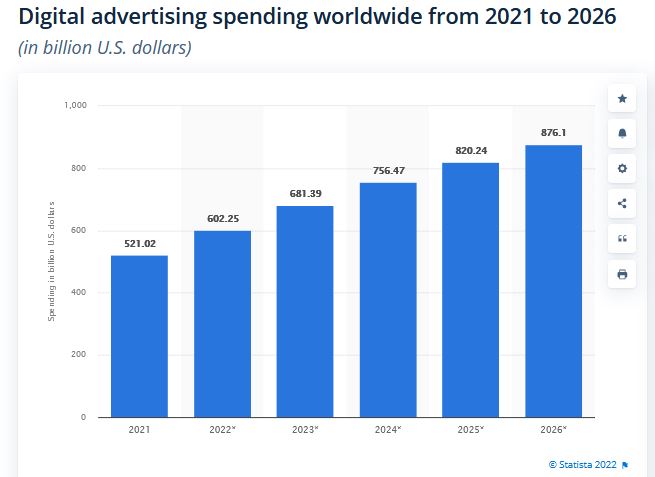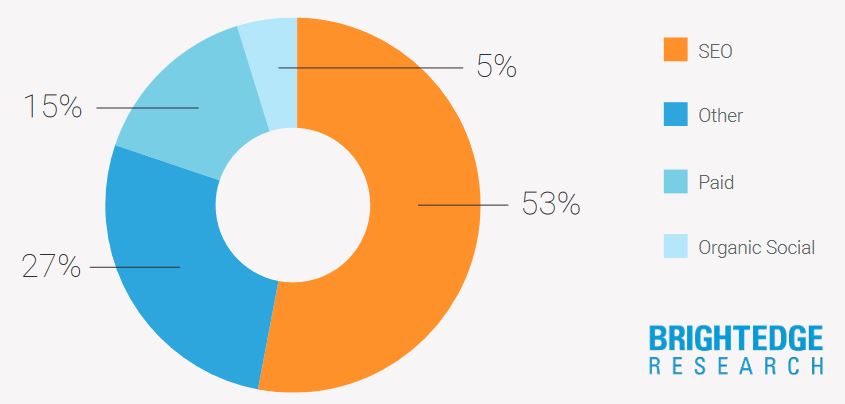In today’s world, virtually every industry is oversaturated with competitors, and some of them are bound to fade into the background.
That being said, if you don’t know how to get more traffic to your website, it can be practically impossible to stand out from that crowd and convince potential customers to choose you.
But bringing in a consistent amount of website traffic can be challenging, to say the least.
So, how can you actually get people to visit your website?
Well, there are many different ways to drive website traffic, but for the purposes of this article, I’m going to put a broad focus on the two main methods of doing this.
Truth be told, this stuff can get pretty technical, and end up sounding like a bunch of gibberish.
But if you want to be able to bring in enough traffic to ensure your business thrives, then you’ve got to at least have some knowledge of how these tactics work.
That being said, I’m going to try to break things down into language that’s easy to understand and focus only on what you need to know to have a basic understanding of this stuff.
So, if you want to know how to get more traffic to your website, then you’re going to want to keep reading.
In this article, I’m going to explore the two main methods used to increase website traffic, so you can turn your website into the lead-generating and sale-making machine that it should be.
How to Get More Traffic to Your Website
Before I get into the tactics you can use to get more traffic to your website, there’s something you need to know.
The fact of the matter is, if you don’t understand your target market, and can’t get into the heads of your ideal customers, then your efforts to drive website traffic will be doomed from the start.
That means you need to analyze your brand to determine which audience(s) you’re targeting, define your unique selling point, and identify the desires and pain points of potential customers.
If you’ve already figured this out, then you’re good to go.
But if you’re not sure about this stuff, then before you start worrying about how to increase website traffic, I would recommend doing a brand analysis first. If you skip this step, you won’t have the information you need to drive qualified traffic to your site, and your efforts will be in vain.
What do I mean by this?
Well, if you don’t understand your ideal customers, then you’re not going to be able to create effective advertising or choose relevant keywords to inject into your content.
And if you can’t do that, then you’re never going to get those people to your website, and the people who do find your site are unlikely to be interested in what you’re offering.
If you want to learn more about what’s involved in a brand analysis, you should check out our 5 Tips for Creating the Best Website Content Strategy.
For those of you who’ve already analyzed your brands, determined your target audience(s), and gotten to know your ideal customers, let’s explore how you can take that information and use it to direct qualified traffic to your website.
READ: Understanding These 3 Trends Will Help You Design the Best SEO Strategy for 2022

There’s no doubt about it – search engine optimization is one of the best ways to bring qualified traffic to your website.
And if you want to generate that traffic, you’ve got to have a strategy.
So, if you want some insight on the latest trends in SEO to help inform your SEO strategy for 2022, then this article is for you.
It discusses some of the latest trends in search engine optimization, including artificial intelligence, user intent, and more.
Paid Website Traffic
The term paid website traffic refers to traffic that’s generated by users who click ads that bring them to your website, which can be purchased on search engines, social media, or elsewhere.
Typically, these ads are charged a CPC, or cost-per-click, meaning every time someone clicks one of your ads, you’ll be charged a fee.
There are so many different options for bringing traffic to your website with paid ads that it’s actually become incredibly overwhelming. There’s Google, Bing, LinkedIn, Facebook, Twitter, Instagram, Pinterest, TikTok, and a plethora of other providers of ad space for you to choose from.
Most of these companies bring in the bulk of their revenue from ad sales, which shows just how effective these ads can be.
According to data from Statista, in 2021, worldwide digital advertising spending sat at more than $521 billion, and is projected to increase to over $876 billion by 2026.

Why am I pointing this out?
Well, if these ads didn’t help companies to drive traffic to their websites, there’s no way they would be spending this much money on them, plain and simple.
So, what makes businesses around the world spend over half a trillion dollars per year on digital advertising?
Well, in a survey from Clutch, 75 per cent of respondents said paid search ads “make it easier to find the information they are searching for on a website or search engine.”
But what is it that’s allowing these ads to connect with the right people and make it easier for them to find what they’re searching for?
This can all be chalked up to user data.
You see, the companies that sell ad space collect a massive amount of user data, which allows you to target very specific audiences, so you can be sure that the people who see your ads are actually interested in what you’re offering.
This user data, coupled with the information you’ve derived from your brand analysis, can allow you to create highly effective advertising, and ensure it’s being served to people who are actually interested.
But unless you want to spend countless hours on researching and trial and error, this is probably not something you should attempt yourself.
Because if you don’t have a firm grasp on how this stuff works, then you’re not going to know what you’re doing, and you could spend a ton of time, money, and energy with no guaranteed results.
That being said, you’re probably better off hiring a digital marketing professional for help with this.
Organic Website Traffic
The term organic website traffic refers to any traffic coming to your website from unpaid sources.
This kind of traffic can be generated using many different methods, such as social media marketing, content marketing, and search engine optimization.
And believe it or not, despite the effectiveness of digital advertising, organic traffic is actually responsible for the majority of website traffic, so you’ve got to get this stuff right.
According to a study from BrightEdge, as of 2019, 53 per cent of trackable web traffic was organic.
As you can see from the graph below, this percentage is referred to as “SEO”, which stands for search engine optimization, and this is where the bulk of organic traffic is coming from.

For those of you who don’t know what SEO is, it’s a marketing tactic that involves doing things that will help your website to be more visible on search engines like Google.
And similar to the digital advertising market, search engine optimization is also a multi-billion-dollar industry.
According to a report from Visiongain, the global SEO services market is projected to grow from $51.74 billion in 2021 to $63.19 billion in 2022 and is expected to generate more than $134 billion per year by 2026.
And according to a survey from Search Engine Journal, businesses are spending an average of between $1,000 and $5,000 per month on SEO.
So, why are businesses spending this kind of money on SEO? And why is SEO spending set to increase?
The reason this is happening is that business owners know SEO is one of the best ways to generate organic traffic, and as everything has moved online over the last couple of years, it’s bound to become even more effective.
At any rate, it’s important to mention that at least in the short term, organic traffic is unlikely to generate the number of website visitors that digital advertising can.
But it’s an effective long-term strategy for driving website traffic, and it’s definitely more economical, as you don’t have to pay a fee every time someone comes to your website.
That being said, driving organic traffic to your website requires even more technical knowledge than generating paid website traffic, so if you don’t have a background in digital marketing, you’re better off hiring an SEO expert to do this stuff for you.
Overwhelmed by the idea of trying to get more traffic to your website all by yourself? For decades, we’ve been helping business owners drive qualified traffic to their websites. Contact us today to find out how we can help you bring more visitors to your website.
To your business success,
Susan Friesen
P.S. If you liked the article, you might want to subscribe to our newsletter. We publish tons of valuable content to help you learn more about marketing, and subscribing is the best way to ensure you don’t miss out. Additionally, if you’d like to learn more about building a search engine optimized website, click here for our free website guide.







